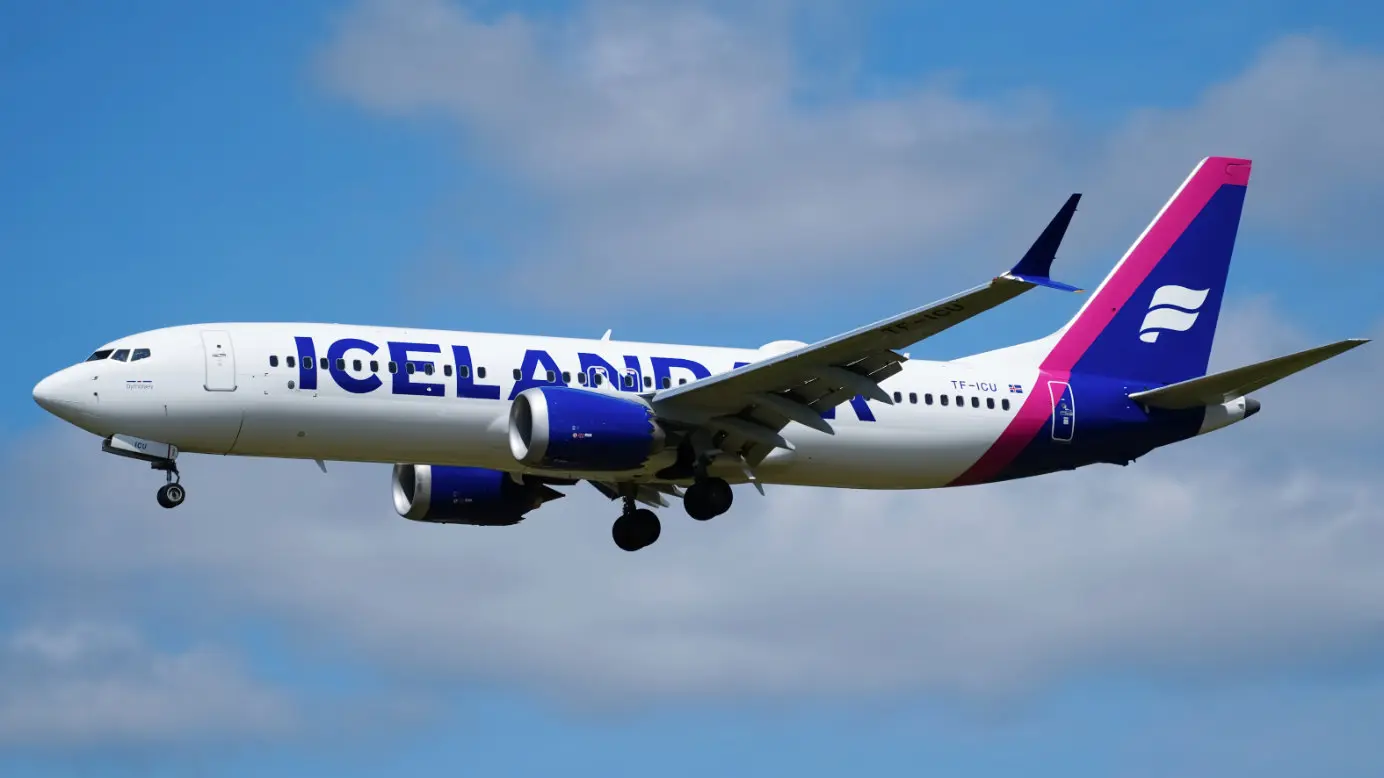
Which Boeing 737 Is the MAX and How to Recognize It
You have probably heard of the Boeing 737 MAX. But how do you recognize a 737 MAX?
Table of Contents
Most people have probably heard of the Boeing 737 MAX. After a long-term grounding, as a result of a series of accidents, the plane is now back on its wings and you may therefore have to fly with a 737 MAX.
Consequently, you may also be curious about which Boeing 737 is the MAX and how you can recognize it from other, earlier generations of Boeing's popular narrow-body jet.
In this article, we review five visual ways to recognize a Boeing 737 MAX and how to tell the difference between a 737 MAX and a 737 Next Generation.
Which Boeing 737 Is the MAX?
The Boeing 737 MAX is the fourth generation of Boeing's small narrow-body jet airliner. It is the direct successor to the 737 Next Generation series.
The MAX excels among other things by improvements in range and fuel economy largely provided by the aircraft's two CFM LEAP engines and the entire MAX range includes four aircraft variants in different sizes.
Boeing began the development of the 737 MAX in 2011 and began delivery of the aircraft in 2017.
How to Recognize the Boeing 737 MAX
As we described earlier, there are five clear visible ways in which the Boeing 737 MAX stands out from the previous Next Generation series. Most of them are pretty obvious (once you know what to look for), while some of them require a more trained eye.
Engine Nacelles
One of the most prominent and recognizable visual characteristics of the Boeing 737 MAX is the design of the engine nacelles. The engine nacelle is the housing in which the engine sits. It is one of the easiest ways to recognize a MAX, and a characteristic that clearly distinguishes it from other Boeing 737s.
Boeing has borrowed a number of features and characteristics from their 787 Dreamliner and adopted them for the Boeing 737 MAX. One of them is the design of the engine nacelles, where the exhaust is serrated in a chevron pattern. This pattern helps reduce the aircraft's overall engine noise level by better mixing the engine exhaust and the surrounding air. Both inside and outside the plane, the difference in noise is noticeable.
Another way to recognize a Boeing 737 MAX is on the front section of the engine casing. Here, the unpainted part of the engine intake is wider (viewed from the side) than on older versions of the 737. On the MAX this ring is about as wide as the emergency exits above the wing, while on older generations it is much thinner
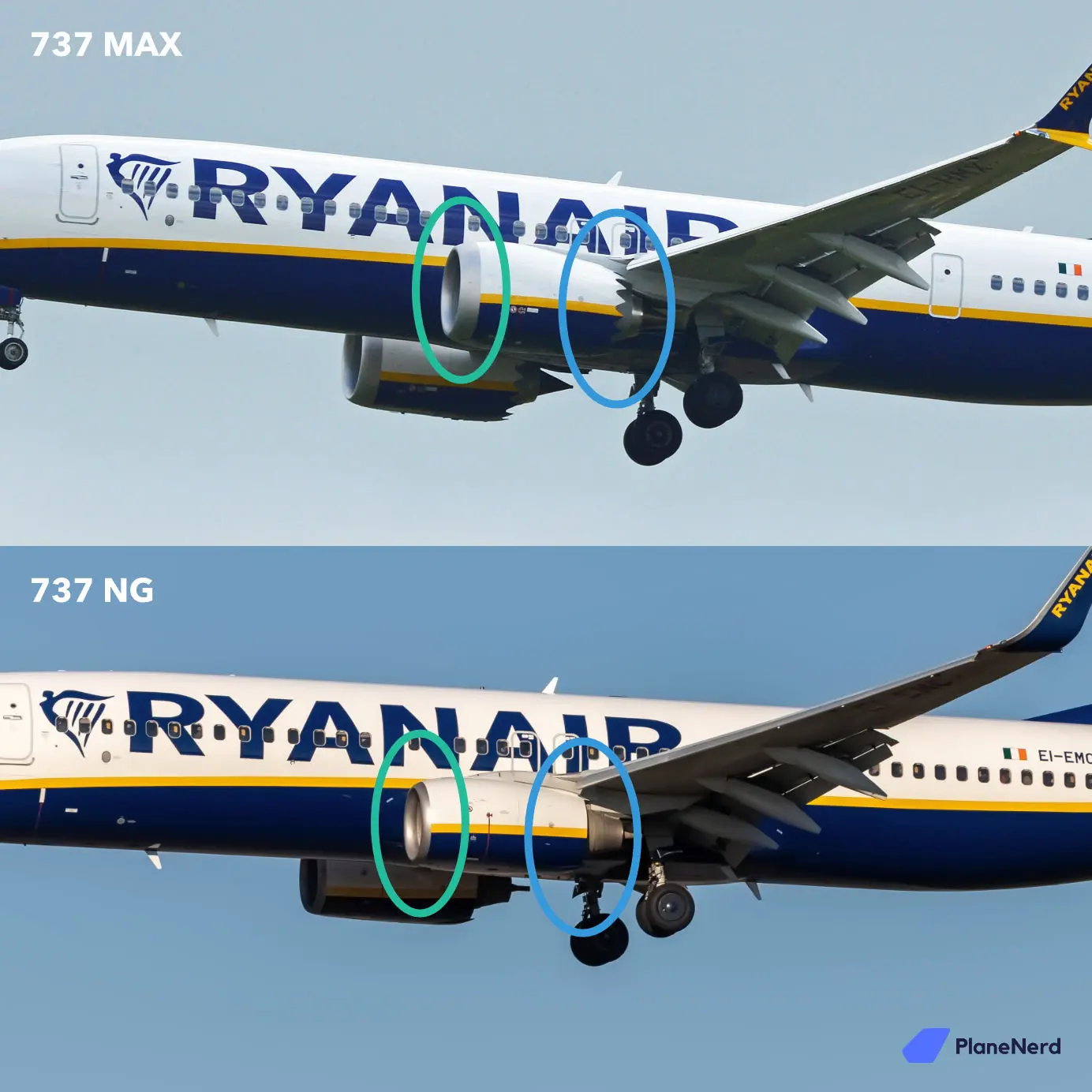
Split Winglets
Another straightforward way to recognize a Boeing 737 MAX is on the wings. Specifically the wingtips. Boeing equipped the 737 MAX with split winglets which intends to improve the aircraft's fuel efficiency.
On previous generations of the 737s, namely the Next Generation series (abbreviated NG) not all aircraft had winglets. However, Boeing offered the NG aircraft with two types of winglets - A blended winglet that points up from the wing, and a split winglet that splits into two and points both up and down. On the MAX series, all the planes have split winglets.
Consequently, you can observe a Boeing 737 with split winglets, which is not a 737 MAX, but rather from the Next Generation series. Therefore, you should also pay attention to the engine nacelles, which we explained above. That way, you can more accurately identify whether it is a Boeing 737 MAX or not.
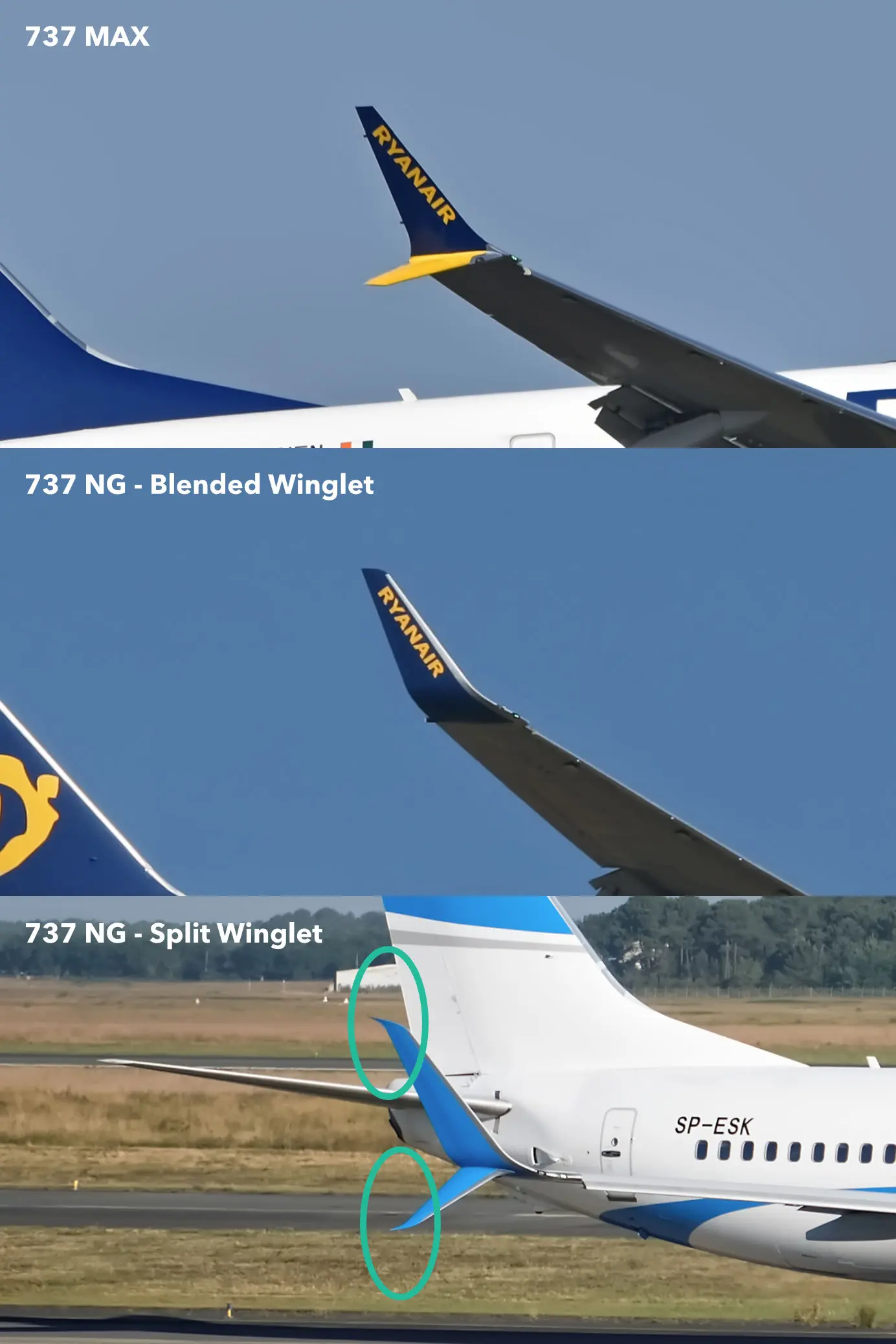
Engine Placement
The placement of the Boeing 737 MAX's engines is also slightly different than on previous generations of the aircraft.
The new high-efficiency LEAP engines from CFM International are larger in diameter than the previous generation 737. To accommodate these new larger engines, Boeing had to move the engines further up and forward on the wing. For the average traveler, however, it can be difficult to see this difference in engine size and placement.
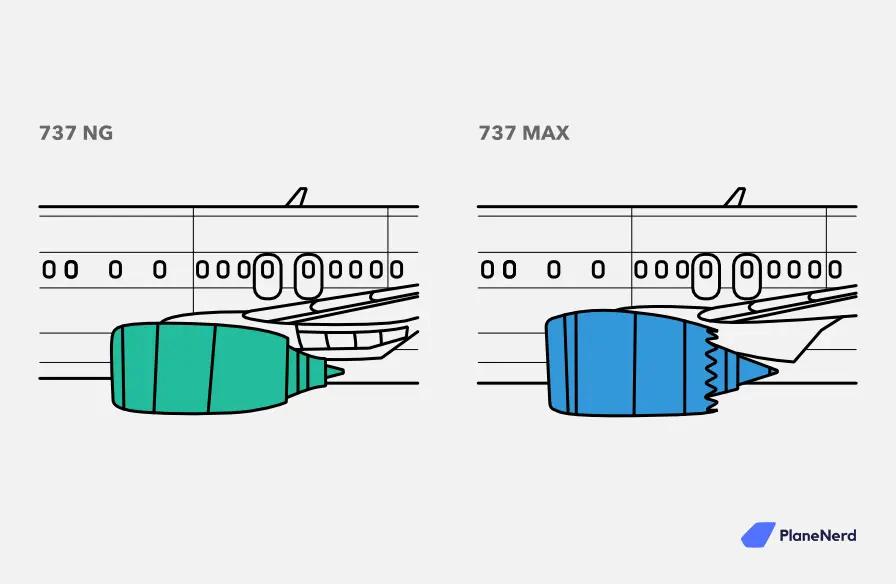
A great deal of controversy has surrounded the 737 MAX's engines and their position, as they are linked to the two fatal MAX crashes in 2018 and 2019. These crashes led to a 20-month-long worldwide grounding of all 737 MAX aircraft. Since then, Boeing has worked on the plane's challenges, and authorities around the world have approved the plane for service again.
Tail Cone
Another, but less obvious, detail is the 737 MAX's tail cone, which has also changed slightly compared to previous generations. On the 737 MAX, the tail cone is more pointed and extends further back than on the Next Generation planes.
If you see a picture of the MAX side by side with a Next Generation 737, clearly see the difference in tail cone design. If you look at the planes separately, however, it can be difficult to tell the difference on the tail cone alone.
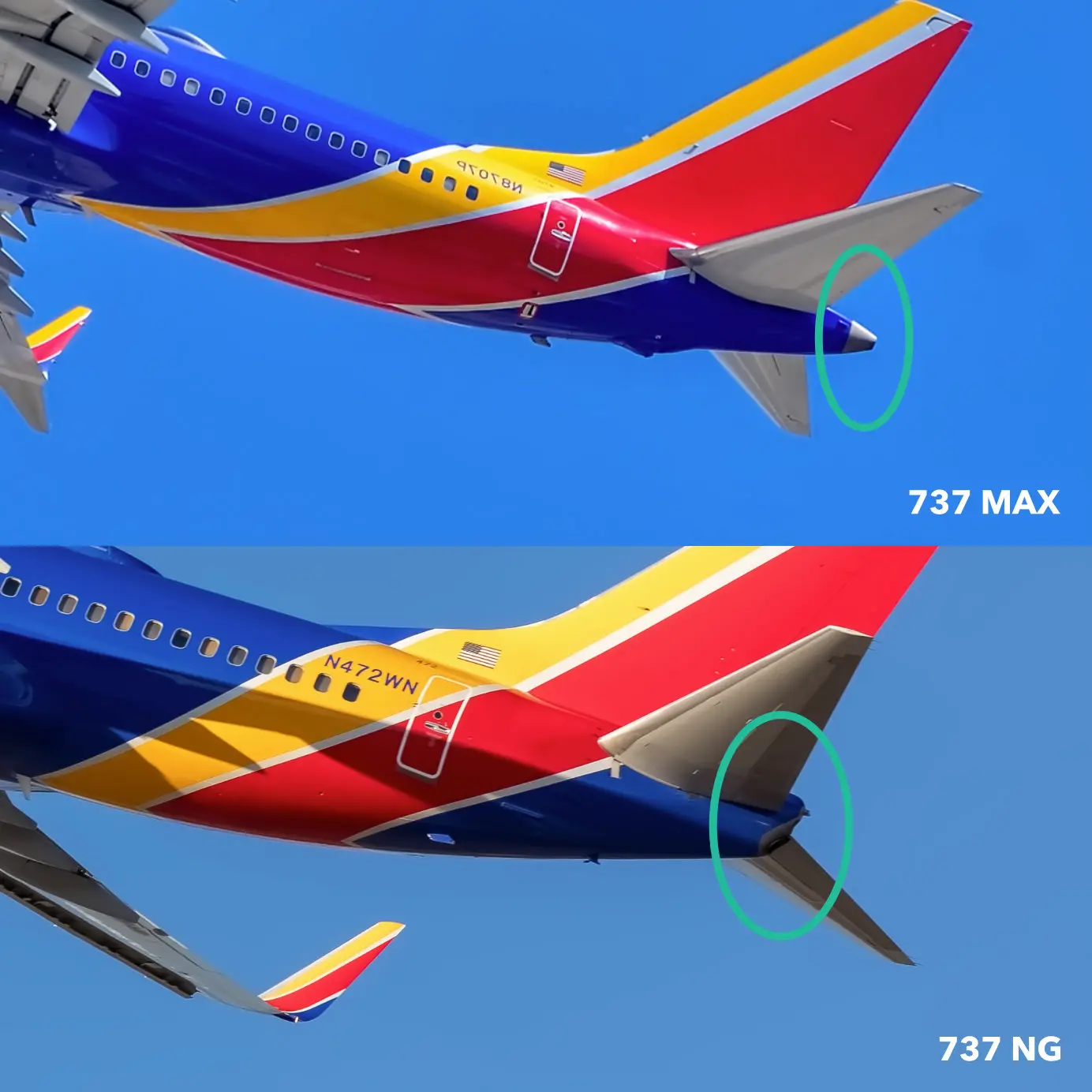
Landing Gear
The Boeing 737 is known for sitting low and the ground clearance from the tarmac up to the plane is lower than, for example, the Airbus A320. So, why is that?
To understand why the Boeing 737 has such a low ground clearance, we must look back to the 1960s when the aircraft was developed. In the 1960s, jet travel was still new and many of the smaller airports that the 737 was designed to serve did not have jetways and ground support equipment. To accommodate these primitive airports, Boeing designed their 737 to sit lower to the ground. In this way, passengers could board more easily (via the 737's built-in folding stairs at the front) and baggage could be loaded by hand. Thus, the 737 did not require any special equipment.
Over the years, the 737 developed further with, among other things, higher passenger capacity and better fuel economy. The plane got new engines that required more space and Boeing raised the fuselage several inches to make room for them.
On the 737 MAX, the engines became larger again, requiring another extension of the nose landing gear. Therefore, if you look closely, you can see the difference where the lower edge of the nose landing gear door sits in relation to the top of the tires.
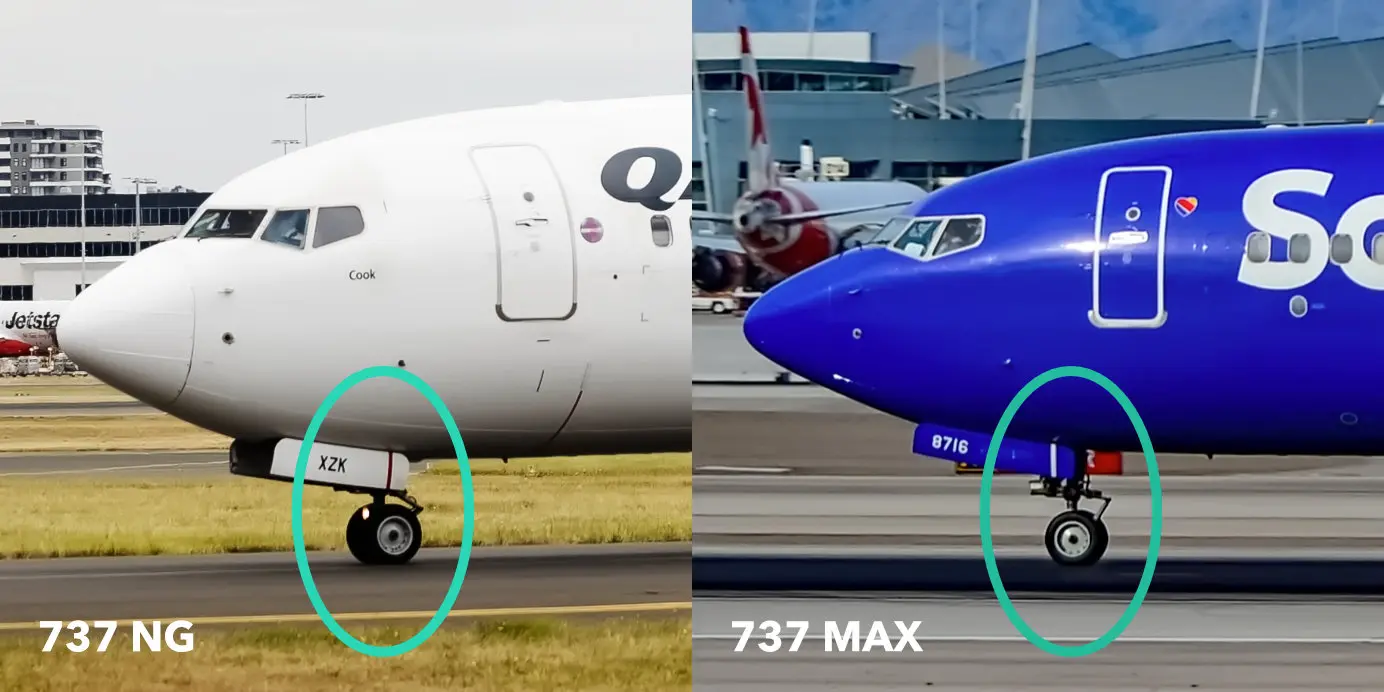
Conclusion
Despite the Boeing 737 MAX's significant difficulties in 2018 and 2019, the aircraft is now back on its wings. And because it is a popular aircraft for the airlines, you may end up having to fly on a 737 MAX.
You can easily recognize a Boeing 737 MAX on a few special characteristics and we have listed the five most important ones in this article. These characteristics include the design of the engine nacelles and the location of the engine on the wing. The winglets at the end of each wing are also easily recognizable, although earlier 737 aircraft may also have them.
Planenerd Newsletter
Join the newsletter to receive the latest updates in your inbox.






